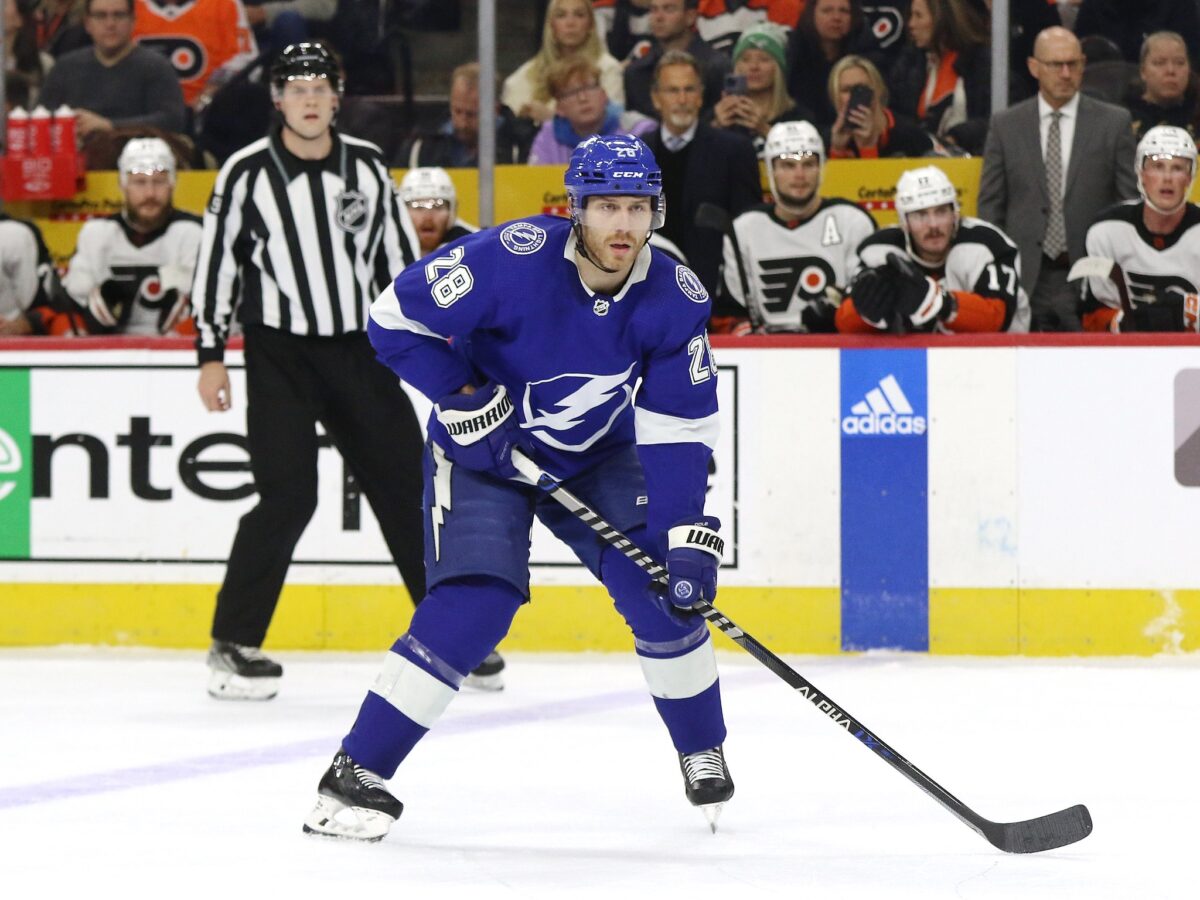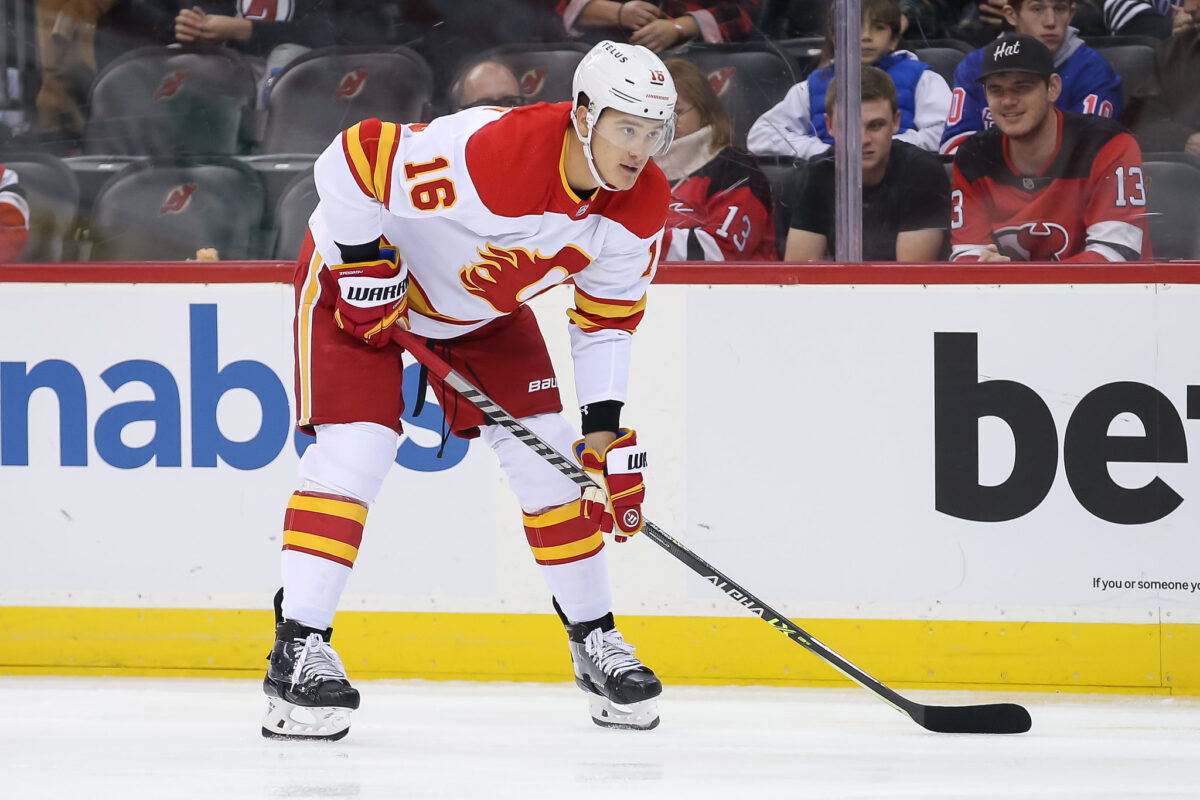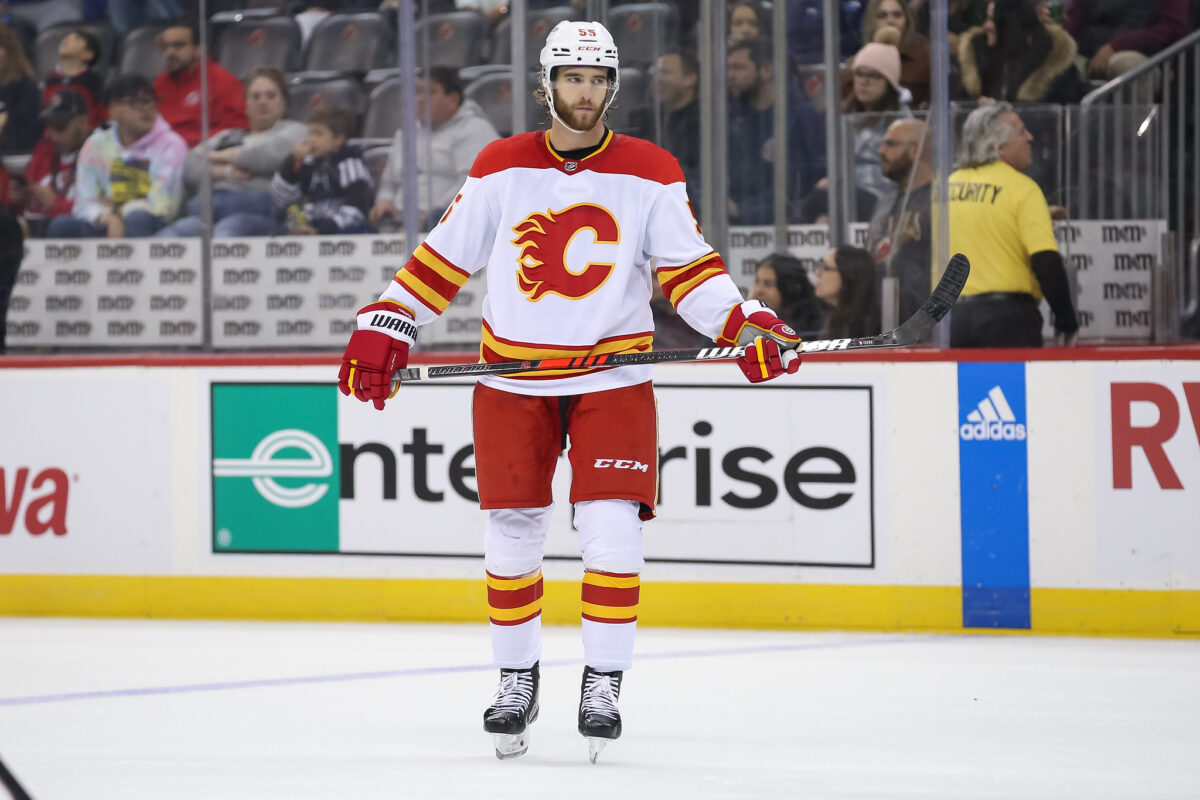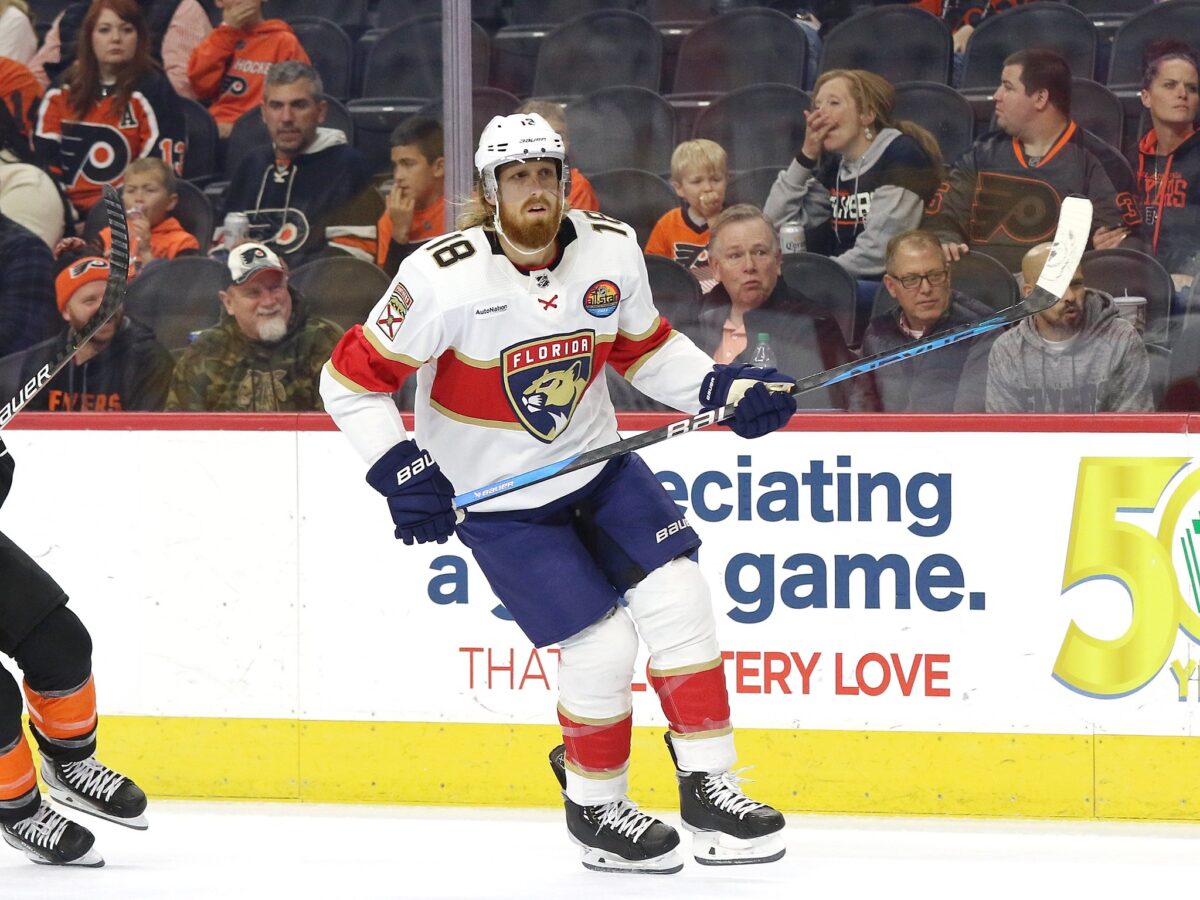It’s no secret that the Buffalo Sabres’ defense, albeit improved, is a weak spot on the roster. Past the big two of Rasmus Dahlin and Owen Power, the depth is shaky, especially if players like Mattias Samuelsson don’t rebound after a tough season.
Given that the Sabres will likely be fighting for a playoff spot this season (barring any major setbacks), the trade deadline will hold some answers for that defensive depth. Players like Victor Olofsson — who has already been rumored to be on the trade block — and an abundance of wealth of forward prospects should mean that not only will the Sabres be active in March, but they’ll likely be able to acquire some quality pieces.
The Sabres, like it or not, need help on both sides of the defense. On the left side, Henri Jokiharju is somewhat of a weak link on the third pair, and if Samuelsson doesn’t rebound, their first pair is in a bit of trouble as well. The right side is a bit more fleshed out with Dahlin and Connor Clifton, but Erik Johnson is aging rather poorly, leaving a hole on the third pair for an easy upgrade to fill. With that said, there should be a plethora of talent available on defense in March, so the Sabres should have a bunch of options to look at.
Ian Cole
Ian Cole, signed by the Vancouver Canucks to a one-year, $3 million deal this summer, was one of the premier defensive defensemen in the league last season with the Tampa Bay Lightning. The veteran blueliner placed eighth among all NHL defensemen with at least 1,200 minutes at 5-on-5 in expected goals against per-60 minutes (xGA/60) with just 2.33. This defensive dominance translated to a near 54% expected goals share (xG%), proving Cole to be one of Tampa’s most valuable defensemen in 2022-23. According to Evolving Hockey, he ranked in the 98th percentile for defensive impact last season.

In addition to his solid underlying statistics at 5-on-5, Cole would be a sturdy addition to a penalty kill that gave up a goal on 27% of all opportunities last season and could desperately use another bolster. He also provides a good amount of playoff experience, being that he’s visited the postseason in nine straight years, including two Stanley Cup victories in 2015-16 and 2016-17. It’s clear, after adding Johnson and Clifton, that the Sabres are looking for veteran defensemen to play with their young studs, and Cole not only brings that presence but solid back-end play as well — something that doesn’t often correlate.
The Canucks are a team that seemingly never wants to commit to a rebuild despite seldom competing for a playoff spot. If things once again go wrong this year, and the Canucks again find themselves as a seller at the trade deadline, I anticipate that this will change. With that in mind, a reasonable price for Cole would be something like a mid-round pick and a defensive prospect — something that the Canucks need to get more of, considering their current roster and prospect pool. A name that immediately came to mind was right defenceman Albert Lyckåsen, a 2020 7th-round pick with decent upside and above-average mobility.
Chris Tanev
The Calgary Flames will be a very active trade-deadline team, and with news that several players don’t intend on re-signing after this season, they might end up having to trade anyone and everyone on an expiring deal. With that in mind, they have several very solid defensemen who fit that criteria — Chris Tanev being one of them. Tanev, much like Cole, is a defensively-minded defenseman, though he has a bit more to give in the offensive zone than Cole does.
Among defensemen with at least 1,000 5-on-5 minutes, Tanev ranked second in the NHL in xGA/60, at 2.01 — trailing only Jalen Chatfield of the Carolina Hurricanes. Whereas Cole sported an expected goals for per 60 (xGF/60) of 2.7, Tanev performs much better offensively, with an xGF/60 of 3.16. All this culminates in an xG% of 61.2%, the highest of any defenseman with those time-on-ice constraints.
The best part? All this can be had for the reasonable price of a $4.5 million cap hit — even less if the Flames retain salary. Tanev doesn’t put up the flashy offensive numbers that say, Noah Hanifin does, so the acquisition cost might be less than what it should be considering his underlying impacts across the board. With the Flames, the players going back would vary depending on the circumstances around the team. The Flames would likely be looking to retool rather than committing to a rebuild. With that in mind, I imagine that the conversation around acquiring a Flames defenseman is centered around moving Olofsson. I could see the Flames moving Tanev for a similar package to what they got for Tyler Toffoli (Yegor Sharangovich and a 3rd), so package up Olofsson and a mid-round pick and call it a day.
Nikita Zadorov
From one Flames defenseman to another, Nikita Zadorov is another appealing option from Calgary. On both ends of the ice, he is a very effective blueliner. He ranked ninth in the NHL in expected goals above replacement (xGAR) — a term that attempts to be an all-encompassing metric consisting of a player’s offensive, defensive, special teams, and penalty impacts. This model had him above the likes of Devon Toews, Roman Josi, Brandon Montour, and Jaccob Slavin, just to name a few of the many high-profile names that Zadorov finds himself outperforming in xGAR.

Much like Tanev, Zadorov’s cost of acquisition might be a bit lower than it should be on account of his lackluster counting stats, though he did pot 14 goals in 2022-23 — more goals than Tanev had points — including a hat trick in the final game of the season. He isn’t known for his goalscoring, or point production in general, to be sure. At 6-foot-6, 248 pounds, Zadorov is much better known for his bone-crushing physical play and shutdown defense, even if his underlying numbers suggest that he contributes significantly in the offensive zone. For a measly $3.75 million, the Sabres should be all over the prospect of adding Zadorov to their defense corps.
Much like Tanev, I’d expect the price for Zadorov to be similar to the Toffoli trade, though I think Zadorov comes in at a bit steeper price. Whereas Tanev can likely be had for Olofsson, and say, a 4th round pick, I’d imagine that 4th becomes a 2nd if it were for Zadorov. The Flames, with the likelihood that Elias Lindholm and Mikael Backlund are not returning, could use some scoring moving forwards.
Dylan DeMelo
Staying in Canada, we have Winnipeg Jets defenseman Dylan DeMelo as an enticing option for the Sabres come March. I’ll be honest, he is the least interesting name on this list, but he’s still worth an in-depth look as a great prospective addition to Buffalo’s defense. As with the previous three names on this list, he is a defense-first player, something that, with Power and Dahlin being the stars of the Sabres defensive corps, Buffalo could use more of on the blue line.
Among Jets defensemen with at least 70 games played, DeMelo ranked second on the team in both xGA/60 (2.42) and xG% (52.74%), both behind teammate — and potential trade deadline target — Brenden Dillon. Where the two look vastly different is in goals above replacement (GAR). DeMelo ranked second on the team, behind Josh Morrissey, in GAR, with 11.2, whereas Dillon only posted a GAR of 0.5. Effectively, where the expected results slightly favored Dillon, the actual results heavily favored DeMelo.
The Jets, much like the Flames, are probably looking to retool rather than rebuild — something that we saw with the Pierre-Luc Dubois trade to Los Angeles in return for three able NHL bodies and a 2nd round pick. With that in mind, though, they have scoring depth on the wings, so Olofsson probably wouldn’t be in trade talks if DeMelo is involved. A fair package for DeMelo, in my opinion, would be something like left defenceman Jacob Bryson, a mid-round pick, and perhaps a lower-end defense prospect (like Lyckåsen).
Noah Hanifin
Moving back to Calgary, Noah Hanifin has outright said that he will not be returning to the Flames once his current one-year deal is up; he’ll almost definitely be moved at or before the trade deadline. His underlying statistics are somewhat pedestrian — among the five Flames defensemen with at least 60 games played, he ranked fifth in xGAR (2.4), fifth in GAR (0.4), and third in xG% (54.93%).

Even with those lackluster relative numbers, a 54.93% xG% is nothing to scoff at, and Hanifin’s production makes up for it. His high-end skating would fit in perfectly with the Sabres’ speed-first system, and he’s good for around 40 points a season at minimum. Plus, there’s the age factor. At 26 years old, Hanifin finds himself as the youngest player on this list and would be eligible for a medium-to-long-term extension with the Sabres without the fear of aging poorly simply because he isn’t old enough for that to be a real factor.
Related: Flames & Sabres Could Be Perfect Trade Partners for Noah Hanifin
The other factor in why Hanifin might be a strong option for the Sabres is his viability on both sides of special teams. If one of Dahlin or Power were to miss time with injury, the power play wouldn’t suffer if Hanifin was a part of the Sabres’ blue line. He’s been a staple on Calgary’s penalty kill since joining the team in 2018, so he’s certainly not out of place there either.
Hanifin’s acquisition cost would be significantly higher than any other name on this list, partly because of name value and partly because he’s shown flashes of being a genuinely elite defenseman. Olofsson and a pick simply wouldn’t be enough, and the Flames would (and should) ask for a bit of a haul. I’d anticipate the Flames starting with Olofsson, a 1st, and perhaps one of the Sabres’ many good center prospects. Anton Wahlberg would be an enticing option for a Flames team that’s losing its top center. If Olofsson isn’t enticing enough for the Flames, I could absolutely see them asking for a 1st and someone like Jiri Kulich.
Honorable Mentions
Brendan Dillon, as mentioned before, led Jets defensemen with at least 70 games played in xGA/60 (2.35) and xG% (53.22%). At $3.9 million, the 32-year-old is a bit pricey for what he provides, but given that the Jets’ retool leaves them on the outside looking in, Dillon could be up for grabs as a bit of a last-resort upgrade.
Marc Staal was acquired by the Philadelphia Flyers this summer and is a prime candidate for an ultra-cheap, niche option for teams looking for a defense-first, third-pair upgrade for a playoff run. His experience speaks for itself, and he’s a more-than-solid addition to the penalty kill for just $1 million.

Finally, there’s Alexandre Carrier from the Nashville Predators. He’s not going to score a lot of points, but as a defense-first, net-positive on the penalty kill, he could be useful as a third-pair trade option, especially at the reasonable price of $2.5 million. On a somewhat weak Predators squad, he posted a 50.99% xG%, and led the team in both SH xGAR (1.1) and SH GAR (1.2).
The Sabres Will Be Active at the Trade Deadline
I’d be shocked if the Sabres weren’t one of the more active teams at the trade deadline, because I anticipate them being a competitive team, and they have some glaring holes in their lineup — something that stymies Stanley Cup contenders from making more than a move or two.
Their most glaring hole, in my opinion, is on defense. They have a very strong forward corps — at least in the top nine — so I don’t believe that they will make many moves at forward unless they open up a spot via trade. With that said, I don’t believe there to be many stronger options as far as defensive targets go, especially ones who are available on expiring deals at a reasonable price tag.
